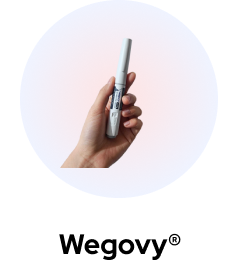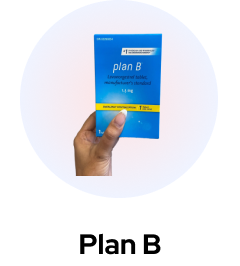Ozempic is the brand name for semaglutide, a glucagon-like peptide-1 (GLP-1) receptor agonist prescription medication, used in the treatment of type 2 diabetes in adults (note that it is not approved for use in children).
When taken, Ozempic works to stimulate insulin production in the body leading to lower blood sugar. Its side effect is that it may be beneficial in aiding with weight management, a desirable outcome for many people. In Canada it is approved for weight management in those with obesity and a BMI of 27 or higher.
Its administration is subcutaneously by the patient via a once a week injection that can be done at home. However, if you’re new to Ozempic, then you may have questions about exactly how to self-administer your dosage.
In this article we’ll cover:
- What the Ozempic Pen injector is
- The benefits of the Ozempic Pen
- Our guide to understanding dosing
- Potential side effects
- Things to bear in mind with the Ozempic Pen
- Frequently asked questions.
Let’s begin!
What Is the Ozempic Pen Injector?
The Ozempic Pen injector is similar to an EpiPen. It is the delivery mechanism for your dose of semaglutide medication. It stores the medication, and comes with needles for administering each dose.
There are currently three different types of Ozempic Pens available:
- The red label – This delivers 0.25 mg and 0.5 mg doses and contains a total of 2 mg
- The blue label – This delivers 1 mg doses and contains a total of 4 mg
- The yellow label – This delivers 2 mg doses and contains a total of 8 mg.
Each pen contains enough medication for four injections — a month’s supply of Ozempic.
How Does the Ozempic Pen Work?
The Ozempic Pen allows for self-injection subcutaneously (ie, beneath the skin into the fatty layer of tissue) into your bloodstream. You should avoid injecting into muscle or directly into veins. Recommended injection sites include:
- The front of thighs
- The front of abdomen
- Upper arms.
Be sure to rotate your injection site each time.
The medication mimics GLP-1, a hormone that promotes insulin production. So, once you’ve taken the medication, your body will produce more insulin, lowering blood sugar.
Depending on which Ozempic Pen you’re using, you will be able to both select your dose and see how many doses are remaining.
Benefits of the Ozempic Pen
There are many benefits to the Ozempic Pen. Not only is it more effective than oral semaglutide medication (which is not approved in Canada), it may also work better than other diabetes medicines available on the market (or in combination with these).
Additionally, thanks to its ease of mechanism, patients who use the Ozempic Pen are able to self-administer the drug without trouble.
If you need help, your medical team or Nurse Practitioner will be able to instruct you further. Novo Nordisk also has a helpful video on their website, which you can refer to.
Lower Blood Glucose Levels
The primary benefit of using the pen is the resulting lowered blood glucose level. This mitigates the effects of diabetes and has been shown in studies to have a greater effect on AC1 than other diabetes medications.
Reduced Risk of Cardiovascular Events
Due to Ozempic’s positive effects on blood pressure, along with its effective treatment of type 2 diabetes, taking it (or a similar semaglutide medication) reduces the risk of major cardiovascular events. This includes heart attack, stroke, hypertension, and death.
When used to assist with weight management, this may also reduce the risk of cardiovascular issues and the development of heart disease.
Weight Loss Potential
One of the side effects of Ozempic is its potential to help patients with weight management. This is thanks to the side effects of reduced appetite and increased satiety (the feeling of fullness after eating).
If you are interested in primarily taking Ozempic as a tool for weight management, you will only be approved for prescription by your medical team if your BMI is 27 or over.
The best results on Ozempic for weight management will be achieved if you combine your treatment with positive lifestyle changes, including the implementation of a healthy diet and regular exercise.
Convenience of Use
The Ozempic Pen injector is small and portable, easy to use, and does not need to be kept refrigerated once used.
Not that unused Ozempic Pens should be stored in the refrigerator, however.
Understanding Dosing With the Ozempic Pen
When you’re prescribed Ozmepic, your medical team will advise you which dose to use. It is important to only take Ozempic as prescribed.
Dose Counter Feature
You can use the dose counter to see how much medication is remaining in your pen. To do this, turn the dose counter until it stops. If it displays your dose (0.25 mg or 0.5 mg), then there is enough left for a dose of that size.
The dose counter also works to ensure you administer the correct amount of Ozempic.
When injecting the medication, watch the dose counter and make sure to leave the needle in until the counter has reached zero. Then, after slowly counting to six, you can remove the needle and the full dose will have been delivered.
Dose Selector Button
When administering Ozempic, use the analog dose counter dial to select your dose.
To do this, turn the dose selector until your correct dose is displayed. This allows you to self-administer the correct amount of medication.
Injectable Prescription Medicine Label Guidelines
Make sure to always follow the medication label guidelines when injecting Ozmepic. They will be included with your pen injector, but you can also find them here.
Be sure to dispose of used needles in a sharps container, never reuse needles, and do not share your Ozempic Pen with anyone. This will reduce the risk of infection.
Side Effects of Using the Ozempic Pen
Like any medication, Ozempic can have side effects. However, there may be fewer side effects from the Ozempic pen than with other common diabetes treatments.
Common Side Effects
Common side effects from the use of the pen itself include itching and swelling at the injection site. Make sure to rotate your injection site each time to minimise irritation.
Side effects of Ozempic commonly include:
- Nausea
- Vomiting
- Diarrhea
- Abdominal pain
- Constipation.
These side effects are often seen at the start of your treatment, or when your dose increases. However, they are likely to dissipate as treatment continues.
More serious, but rare, side effects may include:
- Changes in vision (diabetic retinopathy)
- Hypoglycemia
- Allergic reactions – These may manifest as swelling of the face, tongue, throat, or shortness of breath following dosage, as well as and itchy rash or hives around the injection site.
- Kidney issues
- Pancreatitis (inflammation of the pancreas)
- Gallbladder issues
- Thyroid cancer
Trials on mice showed that use of semaglutide led to the development of thyroid tumors. While it is not yet known if this translates to humans, the advice is to practice caution, and if you develop any soreness or lumps in your neck, contact your medical team immediately.
If you develop any symptoms of the more serious side effects of Ozempic, discontinue your use immediately, and contact your medical team, or visit the ER at your local hospital.
Considerations While Using the Ozempic Pen
It’s important to discuss the details of your medical history and treatment plan in full with your medical team to find out if Ozempic is the right medication for you. Like other prescription medications, Ozempic is not the right solution for everybody.
Additionally, there are a number of contraindications with Ozempic, as well as medical conditions which will make the drug unsafe.
If you are pregnant, breast feeding, or planning to conceive, discuss this with your medical team as well, as you may need to alter your treatment plan.
Important Safety Information and Contraindications for Use
Do not use Ozempic if you or your family have a history of medullary thyroid carcinoma (thyroid cancer) or if you have Multiple Endocrine Neoplasia syndrome type 2.
Additionally, Ozempic may not be the right choice for patients prone to pancreatitis or kidney problems.
Always use a new needle for each injection, and dispose of used needles safely. Never share your Ozempic Pen with anyone else, even if the needle has been changed.
Key Takeaways
The Ozempic Pen injector is a convenient and effective prescription treatment option for those with type 2 diabetes, or those who are using the drug for assistance with weight management.
Your dosage will vary depending on your personal circumstances, so be sure to follow your medical team’s instructions when administering the medication.
If you’re unsure how to use the Ozempic Pen to self-administer your dosage, talk to your medical team or Nurse Practitioner for assistance. Pharmacies may also be able to assist.
There are a number of side effects and contraindications to be aware of when using Ozempic, so be sure that you’re fully informed before beginning the drug.
Ozempic Pen FAQs
Will the Ozempic pen make me lose weight?
While its primary function is not as a tool for weight management, the side effects of Ozempic have shown it to be highly effective. Results will vary from person to person, however, and you will only be approved for prescription if you either suffer from type 2 diabetes, or have a BMI of 27 or higher.












 (US)
(US)